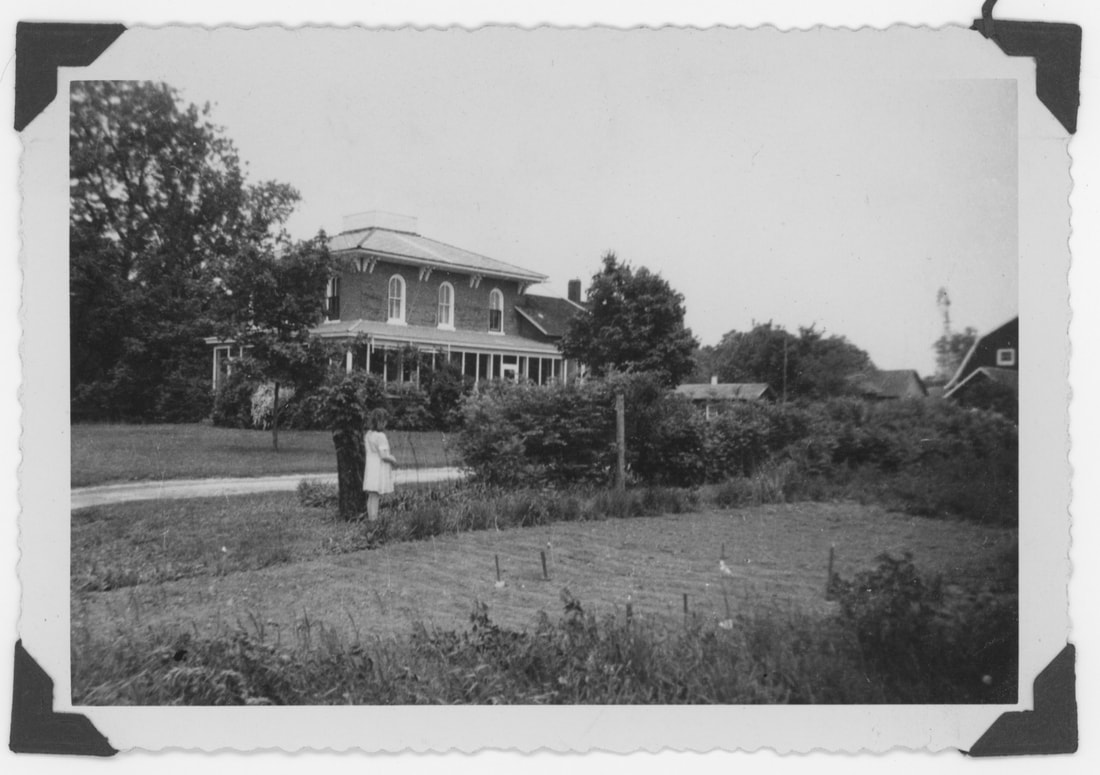|
The farm in Southern Michigan where my grandparents lived was on East Horton Road between Pence Highway and Scott Highway, rural roads that cut Lenawee County into a squared off landscape of corn and bean fields. Upsetting the symmetry was Bear Creek, a scribbling meander that flowed slow and muddy beneath a two-lane bridge under East Horton Road just below the farm house. In summer, I fished for bullheads there and hugged the bridge's riveted steel rail as cars occasionally rushed by scattering dust and spitting gravel that pinged from the bridge near my feet.
My grandparents were Bobby and Fern Bruce. My grandfather was tall, slim and soft spoken. The first son in the Bruce line for four generations was a Robert, so my grandfather was known as Bobby, to distinguish him from his father, grandfather and his first son. My grandmother was short and stocky, practical and pragmatic and focused on a routine made smooth by years of repetition. After raising four children, rendering lard from butchered pigs, canning beans and fruit and cooking the meals, she was used to staying busy. The first of the Bruce clan to land in Michigan was my great, great grandfather Robert. He was born in Ireland about 1829 and was just coming of age when blight killed the potato crop and he joined millions of others and fled to America. On Aug. 11, 1849, he sailed from Liverpool, England. On the passenger list, he said his occupation was "immigrant." He was 20 years old. Southern Michigan was a popular spot for the Irish. Many landed in Detroit to work in factories. Others made their way further west to the rural areas where soils were rich and farms were available. The northwest corner of Lenawee County is an area known as the Irish Hills, named for the many Irish immigrants who called that place home. By 1860, 11 years after he left Ireland, he owned a farm, had a wife, Margaret, also born in Ireland, and three children. In 1863, he was drafted into the Union Army to fight in the Civil War. By 1870, he was back on the farm, presumably, the one I came to know, and he had five children. Both he and Margaret indicated on census forms they could not read or write. Death came to Margaret first on Oct. 6, 1897. Heart failure. Robert followed a few months later on June 7, 1898, and the farm passed to Robert's first son, my great grandfather and eventually to my grandfather. I loved that farm. Each spring, two small lily ponds under shade trees in the back yard were full of black dot frog's eggs suspended in jelly. Quickly they became tadpoles who grew tiny feet and by summer they stared back at me as leopard frogs. Wild cats patrolled the barn for mice, and in summer we picked beans, peas, melons and corn from a large garden next to the driveway. A chicken coop stood on one side of the barnyard, and sometimes I was sent there to gather eggs. Looming large at the end of the farm yard was a big red barn where steers milled in tight quarters. Bales of hay were piled like blocks in the hayloft, and from a square hole in the floor above the cattle pens I watched my grandfather push through the steers below, occasionally swatting them with a coiled rope he held in one hand to move them out of the way. A garage stood next to the house, and tacked above its door was an embossed metal sign indicating this was a centennial farm, one held in the same family for at least 100 years. I was impressed. I still am. More than 100 years beyond Ireland. Beyond hunger and illiteracy. More than 100 years beyond an ocean crossing, beyond Civil War battles and the birth of five children. And there, improbably, I stood, 10 years old, five generations beyond arrival, on ground where a new promise was realized, at the edge of a cornfield on a hill above Bear Creek.
0 Comments
Leave a Reply. |
Archives
April 2022
Categories |

 RSS Feed
RSS Feed